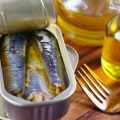Menstrual cramps can be a difficult and painful experience for many women. However, incorporating certain foods into your diet can help alleviate these symptoms and provide relief during your menstrual cycle.
1. Ginger
Ginger is known for its anti-inflammatory properties that can help reduce the intensity of menstrual cramps. You can enjoy ginger tea or incorporate fresh ginger into your meals to experience its benefits.
2. Turmeric
Curcumin, the active compound in turmeric, has powerful anti-inflammatory effects that can help ease menstrual pain. Try adding turmeric to your dishes or consider taking a turmeric supplement to help alleviate cramping.
3. Leafy Greens
Leafy greens like spinach and kale are not only nutritious but also rich in magnesium, which can help relax muscles and reduce cramping during menstruation. Include these vegetables in your meals for added benefits.
4. Salmon
Salmon is an excellent source of omega-3 fatty acids, which have anti-inflammatory properties that can help alleviate menstrual cramps. Make an effort to include salmon in your diet at least twice a week to experience the positive effects.
5. Flaxseeds
Flaxseeds are packed with omega-3 fatty acids and fiber, which can help regulate hormone levels and reduce inflammation associated with menstrual cramps. Consider adding flaxseeds to your smoothies or yogurt for a nutritional boost.
6. Bananas
Bananas are high in potassium, which can help alleviate bloating and water retention commonly experienced during menstruation. Enjoy a banana as a snack or add slices to your breakfast for relief from these symptoms.
7. Dark Chocolate
Dark chocolate contains magnesium, which can help relax muscles and reduce cramping. Indulge in a small piece of dark chocolate as a healthy treat during your period to potentially ease discomfort.
8. Pineapple
Pineapple contains bromelain, an enzyme with anti-inflammatory properties that can help reduce menstrual pain. Incorporate fresh pineapple into your diet to benefit from its natural pain-relieving properties.
9. Nuts
Nuts like almonds and walnuts are not only a delicious snack but also rich in magnesium and healthy fats that can help reduce inflammation and ease menstrual cramps. Enjoy a handful of nuts for a nutritious and satisfying treat.
10. Chamomile Tea
Chamomile tea is known for its calming and anti-inflammatory properties that can help alleviate menstrual cramps. Take a moment to relax and soothe your cramps by enjoying a warm cup of chamomile tea.
11. Avocado
Avocado is rich in potassium and healthy fats, which can help reduce bloating and period-related discomfort. Incorporate avocado into your salads or sandwiches for a nutritious boost during your menstrual cycle.
12. Watermelon
Watermelon is hydrating and contains lycopene, a powerful antioxidant that can help reduce inflammation and pain associated with menstrual cramps. Treat yourself to slices of chilled watermelon for a refreshing and beneficial snack.
13. Lentils
Lentils are a great source of iron and fiber, which can help regulate hormone levels and reduce the severity of menstrual cramps. Include lentils in your soups or salads to benefit from their nutritional properties.
14. Yogurt
Yogurt is rich in probiotics, which can help maintain a healthy gut flora and reduce inflammation in the body. Opt for plain yogurt with live cultures for maximum benefits during your menstrual cycle.
15. Berries
Berries like blueberries and raspberries are packed with antioxidants and vitamins that can help reduce inflammation and provide relief from menstrual cramps. Enjoy a bowl of mixed berries as a healthy snack to support your well-being.
16. Oats
Oats are rich in fiber and B vitamins, which can help regulate hormone levels and reduce bloating and cramping. Kickstart your day with a bowl of oatmeal topped with fruit for a comforting and nutritious breakfast to help ease menstrual discomfort.









